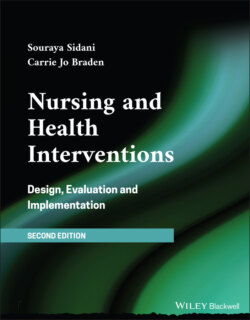Читать книгу Nursing and Health Interventions - Souraya Sidani - Страница 70
Mixed Reviews
ОглавлениеMixed reviews are increasingly performed to understand the health problem. They consist of integrating evidence synthesized from quantitative and qualitative studies. Mixed reviews are justified with the increasing complexity of the inter‐relationships among determinants (occurring at different levels) and health problems (experienced in different domains), and the acknowledgement of the unique and complementary contribution of quantitative and qualitative research methods (Edwards & Kaimal, 2016; Fleming, 2010; Hong et al., 2017). Mixed method reviews (e.g. critical interpretive synthesis) follow the same steps for searching the literature; identifying, selecting, and appraising quantitative and qualitative studies; and extracting data on the experience of the health problem and its determinants from each study. In some mixed‐method reviews, the synthesis is conducted separately for the quantitative (e.g. through vote counting, estimating effect size) and the qualitative (e.g. coding, generating themes) findings; then, the synthesized quantitative and qualitative evidence is compared and contrasted to identify convergence and divergence. In other mixed‐method reviews, the quantitative and qualitative data are integrated (i.e. brought together) during the analysis and synthesis stages of the review.
The integration of the quantitative and qualitative evidence can be done by aggregation or configuration. Aggregation is used when quantitative and qualitative findings address the same association between a determinant and the health problem, and the purpose is to examine convergence (i.e. whether the findings confirm each other). The aggregation may be accomplished at the data or study level. Data‐based aggregation involves the transformation of one type of data into another (e.g. quanticizing qualitative codes/themes) and analyzing the transformed data using the same analytic method (e.g. descriptive statistics). Study‐based aggregation consists of juxtaposing the findings of quantitative and qualitative studies, using grids, tables or matrices, where the interface between the two types of findings occurs in the cells; the latter evidence is compared and contrasted to identify convergence (Fleming, 2010; Hong et al., 2017). Aggregation by configuration entails the arrangement of diverse findings into a coherent form or model. The quantitative and qualitative findings are carefully examined and analyzed to determine if they complement, extend, explain each other (e.g. why and how a determinant contribute to the health problem), or reflect variability in the problem experience and in the association of the determinant with the problem in different contexts (Sandelowski et al., 2012).
All types of literature review are useful for understanding the health problem. The mixed‐method reviews are most promising in generating a comprehensive list of factors contributing to the problem, delineating direct and indirect relationships that are context‐dependent, and providing explanation of why and how the determinants contribute to the health problem.
